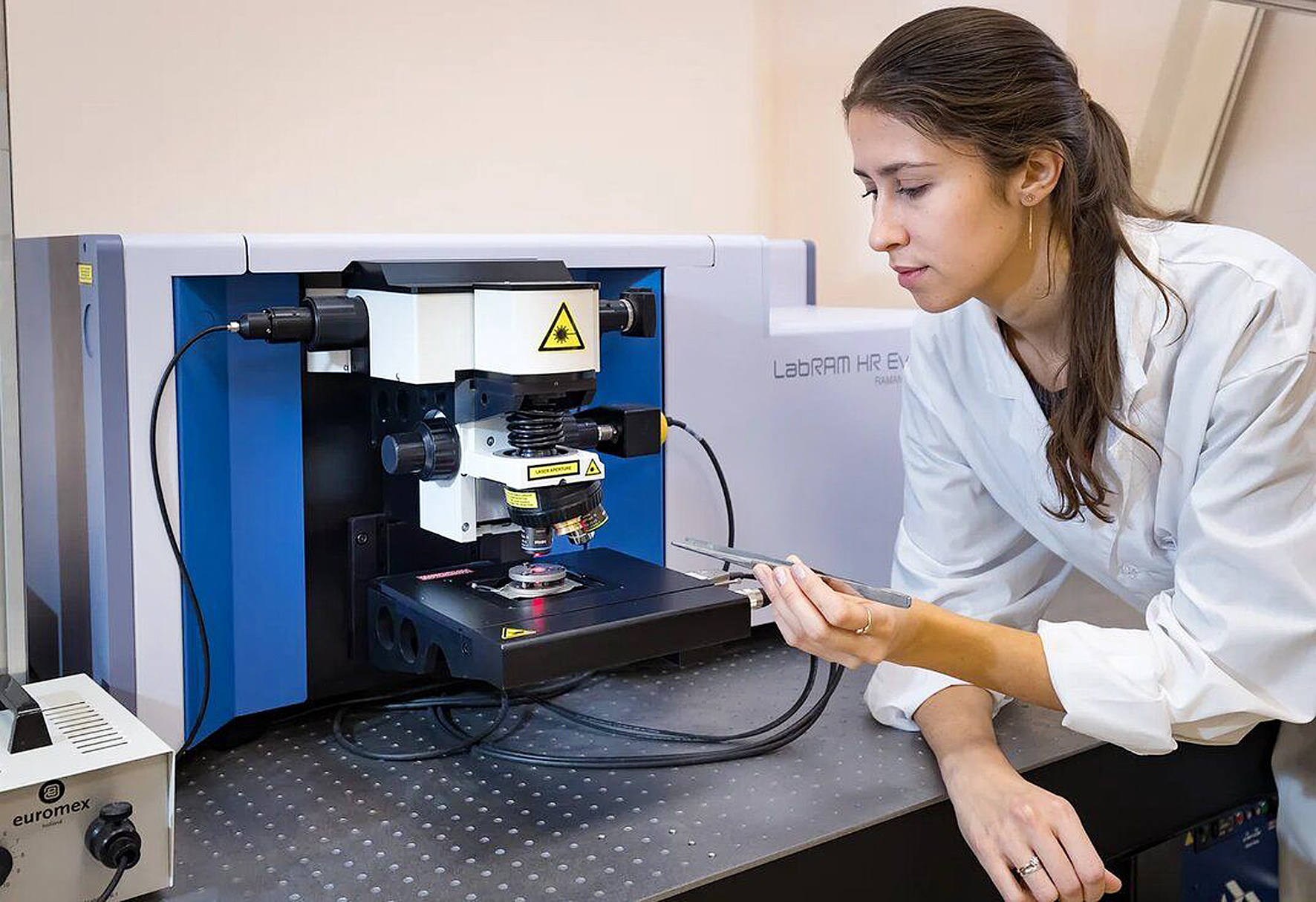Raman spectrometer: wide range of research
News, 01 November 2019
Telling readers of the JINR Weekly Newspaper about the equipment of the Frank Laboratory of Neutron Physic complementing neutron research, we have already reported on the X-ray diffractometer (#14) and the atomic-force microscope (#23-24). Today, we will talk about the Raman scattering spectrometer.
Head of the FLNP Scientific and Experimental Department of Neutron Research of Condensed Matters D. P. Kozlenko said the following about the facility:
“We can highlight the Raman scattering spectrometer among the equipment we have acquired in recent years for complementary research. Raman spectroscopy is the optical method of studying the properties of the matter, i.e. the vibrational spectrum of molecules and atoms, that complements neutron scattering. It should be noted that using Raman spectroscopy makes it possible to register not all the vibration modes of the studied object but only those that are allowed by the rules of the selection. In contrast to this method, inelastic neutron scattering “sees” all the vibration modes of the matter. Nevertheless, characteristic measurement times of Raman spectrometers are much lower and the resolution of spectra is much higher in comparison to inelastic neutron scattering. It allows getting information about the frequencies of some vibration modes in a short time and taking it into account in neutron experiments.
The combination of experimental data acquired by the methods of Raman spectroscopy and inelastic neutron scattering considerably simplifies the analysis of the experimental data for which, as a rule, the methods of ab initio quantum-chemical calculations are used. It is especially important as far as the range of our research has recently shifted to fairly complex substances. It includes numerous molecular crystals used in various technologies, pharmaceutical substances with, as a rule, very complex structure. In this case, the combination of the methods greatly simplifies the analysis of experimental information and allows increasing the unambiguity of its interpretation.”
Nadezhda M. Belozerova acquaints us with the work of the sector and new equipment in the recently repaired room:
“From the very beginning, Andrzej Pavlukoich and his Polish colleagues have created a chemical laboratory in which the synthesis of new materials is carried out. The next step was the repairs of the premises where lots of new equipment was installed, including research and support devices, and everything already operates. We have another premises. We are planning to create workplaces and a restroom for staff members there.
Our device is designed for a wide range of research. We can study vibrational spectra of chemical compounds, see oscillations related to various interatomic bonds. It is possible to study different polymorphs of compounds, to distinguish phases in minerals using characteristic frequencies of vibrational modes. We get various samples: we work in cooperation with groups from different countries, not only with Poland. We cooperate with Russian scientists, including archaeologists. They send us interesting specimens: ancient vases, fragments of dishes, other items. We analyse the contents of these specimens using the analysis of Raman scattering spectra, compare items found on the coast and inland. We compare the outer and inner surfaces of the dish to detect fossilized remains of contents.
We once got an ancient amulet that we could not open up. However, there was surely something inside it; a small hole allowed us to see it. The Laboratory’s tomograph did not show any contents, so the substance was transparent for neutrons. However, this hole was enough for the laser of our spectrometer for analysis. Due to specialized literature, such amulets could store cereals, pieces of parchment. Our amulet stored sulfur.
We had another task: to analyse the glue on an ancient bowl to find out whether it was glued by ancient people or our contemporaries. We removed the glue from the seams, analyzed it, and then analyzed several modern types of glue. It turned out that the spectra were different, so the bowl was glued a long time ago.”
The full version of the article on the website of the JINR Weekly Newspaper (in Russian)
Olga Tarantina, JINR Weekly Newspaper
photo by Elena Puzynina
